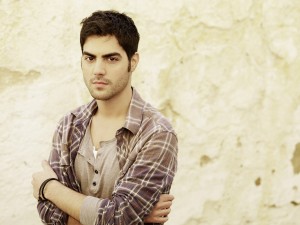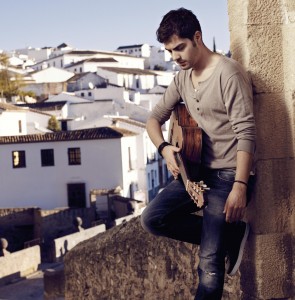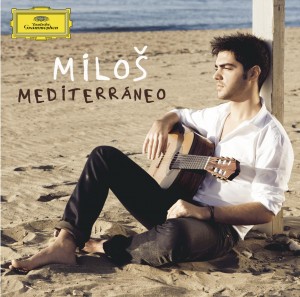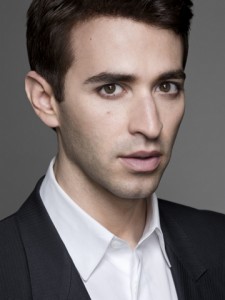Program Notes: Miloš Karadaglić
Bach: Suite in C minor, BWV 997, for lute
In most catalogues of the complete works of Johann Sebastian Bach (1685-1750), one learns that the composer wrote four suites for the lute, all dating from widely separated time periods, plus miscellaneous other pieces. However, recent scholarship has determined that in fact Bach did not actually write any music for the solo lute. Clive Titmuss, writing in Classical Guitar Canada last year, states that “the apocryphal lute works lie well within the confines of Bach’s established keyboard style,” and that they were probably written for various keyboard instruments, including something called the lute-harpsichord. (The G-minor Suite is an arrangement of the Fifth Suite for Solo Cello by way of a keyboard version.) Titmuss suggests that an unnamed German musicologist probably initiated the misconception sometime after Bach’s death, no qualified lute player challenged him, and the notion stuck. According to Titmuss, the so-called Lute Suites “are not technically possible on the lute without fundamental changes to the text,” a viewpoint essentially upheld by one of the outstanding lutenists of our time, Hopkinson Smith, in the introduction to his published edition of the suites.
None of this should detract in the least from our enjoyment of the music as played on guitar, in which form it is commonly heard today. The Suite BWV 997, composed in the late 1730s, comprises only two of the four dance movements that normally made up the core of a Bach suite (the stately Sarabande and the lively concluding Gigue; absent are the Allemande and Courante). The opening Preludio is also a familiar feature, but the following Fuga is most unusual to be found in a suite. The concluding Double is an elaborately ornamented variation of the preceding Gigue.
Villa-Lobos: Four pieces for guitar
Heitor Villa-Lobos (1887-1959) was Brazil’s first composer of international stature and, along with Argentina’s Alberto Ginastera, one of the two greatest purely classical figures to emerge from South America. His life was also one of the most fascinating, exotic and colorful of any composer. Remarkable, scarcely credible tales abound, such as how he introduced the gramophone to isolated jungle tribes and how he barely escaped being cooked for dinner by cannibals. Among Villa-Lobos’ many accomplishments, he was an accomplished guitarist and was one of the first composers outside of Spain to write a substantial body of music for the guitar. This includes the twelve Estudios (Etudes), six Prelúdios (the sixth is lost) and the Suite populaire brésilienne (the French title reflects the composer’s seven-year sojourn in Paris), from which we hear the third movement, Valsa-choro.
The Etudes were written in the late 1920s for the great guitarist Andrés Segovia, who commented that they represent “enormous importance for the development of the performing technique of both hands [and] the lasting esthetic value of concert pieces.”
Nos. 11 and 12 form a satisfying pair, the former reflective and introspective, the latter imbued with fiery, motoric energy. The Preludes, also written for Segovia, evoke various aspects of Brazilian life. The melancholic first is subtitled “Homage to the Brazilian ‘country boy’.” A crucial element to Villa-Lobos’ musical makeup was the chorões – bands of bohemian street musicians in Rio de Janeiro whose free, rhapsodic, improvisational style of music-making suited Villa-Lobos’ personality perfectly. This influence is heard in the short Valsa-choro.
Guitar Music from South America
Miloš Karadaglić’s recital continues with works by four guitarist-composers born in South America. Jorge Morel (b. 1931) and Jorge Cardoso (b. 1949) both come from Argentina but now live respectively in New York City and Paris. Both are renowned as performers, pedagogues and composers. Morel is also known for his innovative approach to composing for the guitar. The multi-talented Cardosa (he also holds a degree in medicine) has composed over four hundred works and has made nearly as many transcriptions and arrangements of folk-inspired music of South American lands as well as of Renaissance figures and composers of the Spanish Baroque. More than 150 guitarists have recorded his music. From each of these Argentine composers we hear a folk-inspired dance number.
We also hear music by composers from two of South America’s smaller nations, the Uruguayan-born Isasís Sávio (1900-1977) and the Paraguayan-born Agustín Pío Barrios (1885-1944). Sávio spent most of his career in São Paulo and became a Brazilian citizen, teaching in the big cities (a number of his students went on to international fame) and performing in the country’s smallest towns and villages. His music is heavily influenced by Brazilian folkore. Batucada is the traditional samba music played by large percussion groups in Brazil’s carnival parades. Barrios was the most important composer to come out of Paraguay and one of the finest guitarists of the early twentieth century. In addition to a large catalogue of over three hundred pieces, Barrios is also credited with being the first classical guitarist ever to record. Around 1930 he took to appearing in concert dressed in traditional Guarani costume and assumed the persona of Nitsuga Mangoré. (“Nitsuga” is Agustín spelled backwards; Mangoré was an early-sixteenth-century chief of the Timbués people.) Although he lived mostly in the twentieth century, Barrios’ music is essentially romantic in spirit. John Duarte, one of England’s leading guitarist specialists, described Sueño en la floresta (Dream in the Magic Garden) as “a spellbinding exercise in tremolo, utterly idiomatic to the guitar.”
Domeniconi: Koyunbaba, Op. 19
Much like Villa-Lobos’ music, that of Carlo Domeniconi (b. 1947) can be seen as a synthesis of two cultures. The Italian-born guitarist and composer studied at the Rossini Conservatory in Pesaro and later in Berlin, where he taught at the conservatory for twenty years and where he now lives. As a composer, he has written more than twenty concertos for one, two, three or four guitars. His love affair with the people and culture of Turkey has resulted in numerous compositions inspired by that land, including his most famous composition, the four-movement suite Koyunbaba (1985). The title may be translated either as “sheep-father,” (shepherd), or “spirit of the sheep.” It is also the name of a thirteenth-century mystic who lived in the southwestern region of the country, a region of vast landscapes and striking, contrasting features. “Each of the four movements,” writes John Duarte, “develops a separate mood in the hypnotic fashion of eastern music and on a time-scale that reflects the unhurried life of both shepherd and mystic, using a wide range of the guitar’s available devices and textures.
Program notes by Robert Markow, 2013.








